Abundant but declining is how the population of Horned Grebe is described. Its range has been shrinking in recent years, though its population is difficult to monitor. Horned Grebes breed primarily in Canada, as well as adjacent parts of Alaska and the northernmost coterminous U.S., and winter widely across the southern and westernmost U.S.
With legs set far back on its body, the Horned Grebe does poorly on land and requires a long running takeoff from the water to become airborne. Wide varieties of displays are used during courtship, involving posture, swimming and diving, and weed gathering.
The Horned Grebe is a small swimming and diving bird with a compact body, medium length neck, somewhat large head, and a thin, pointed bill with a whitish tip that is not always visible. Sexes similar.
Length: 14 inches, Wing span: 18 inches
BREEDING MALE
The Horned Grebe is a small swimming and diving bird with a compact body, medium length neck, somewhat large head, and a thin, pointed bill with a whitish tip. Breeding birds have a blackish head with a large, bold, golden yellow patch behind each eye, a reddish neck and flanks, and dark gray upperparts. Length: 14 in. Wingspan: 18 in.
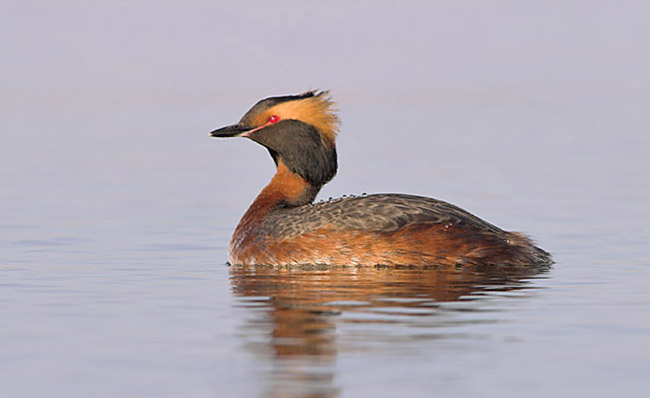
Photograph © Glenn Bartley.
Female
Sexes similar.
Seasonal change in appearance
Winter birds have a black cap, white cheeks, mostly white foreneck and gray hindheck, and grayish upperparts with whitish flanks.
Horned Grebe in winter plumage on the left. Similar Eared Grebe on the right.
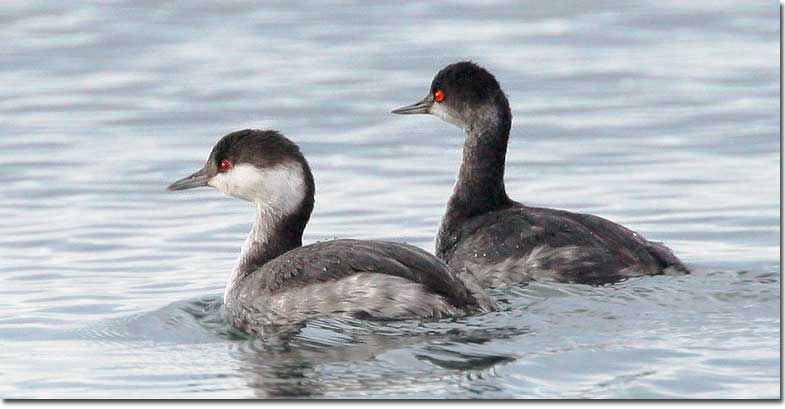
Juvenile
Juveniles resemble winter adults.
Photos of Horned Grebes
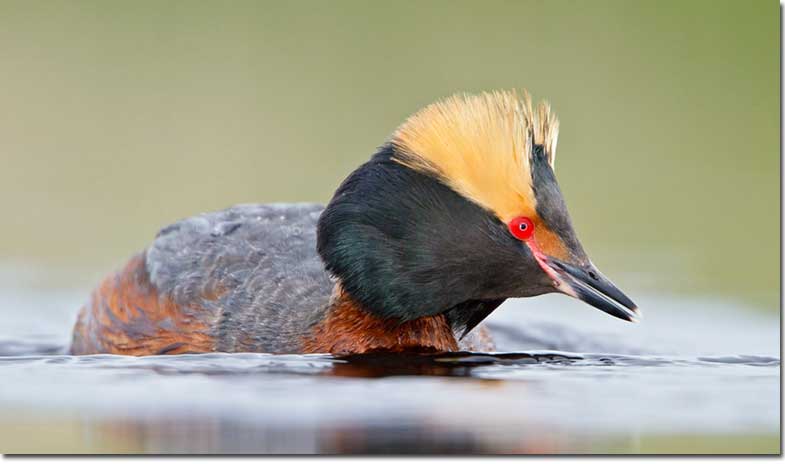
Breeding birds have a blackish head with a large, bold, golden yellow patch behind each eye, a reddish neck and flanks, and dark gray upperparts. A pretty spectacular bird in breeding plumage. Sexes are similar. Photograph by Glenn Bartley.
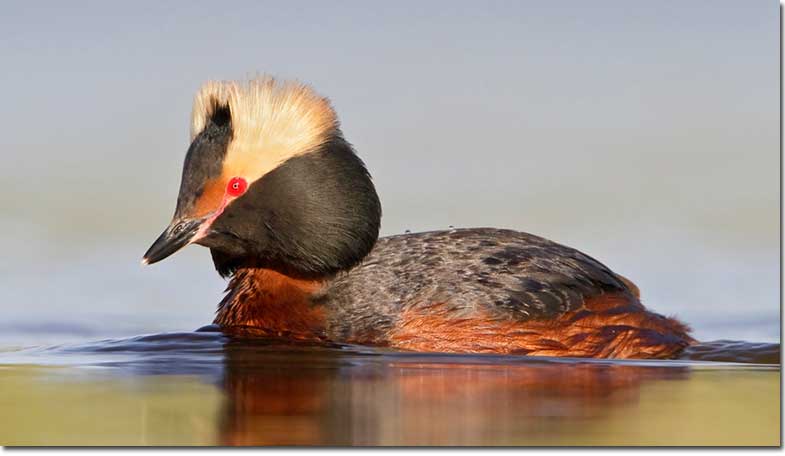
Photograph by Glenn Bartley.
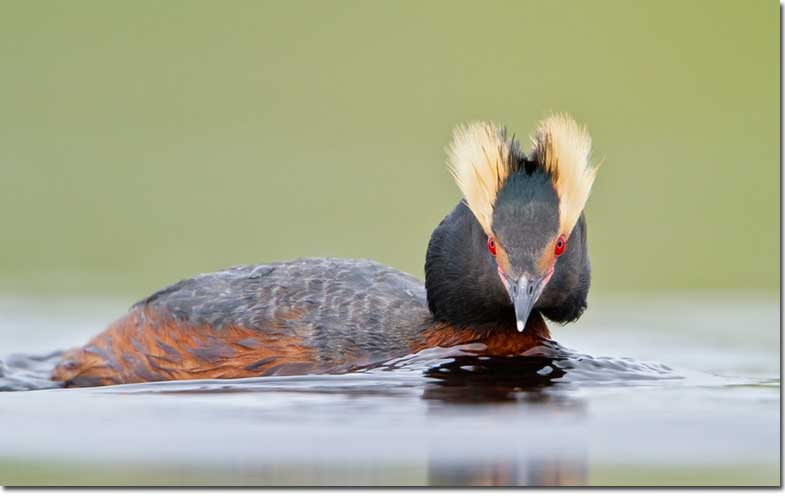
The white tip of the bill is easily seen in this photograph. Photograph by Glenn Bartley.
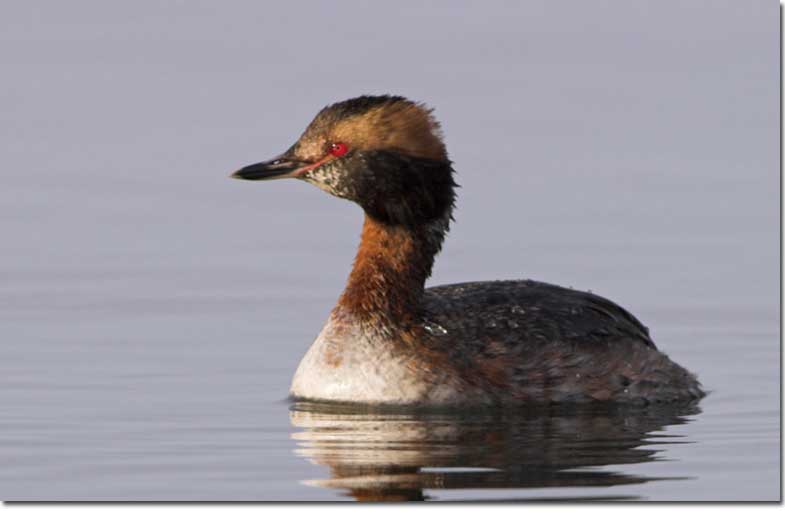
In early molt stage. Photograph by Glenn Bartley.
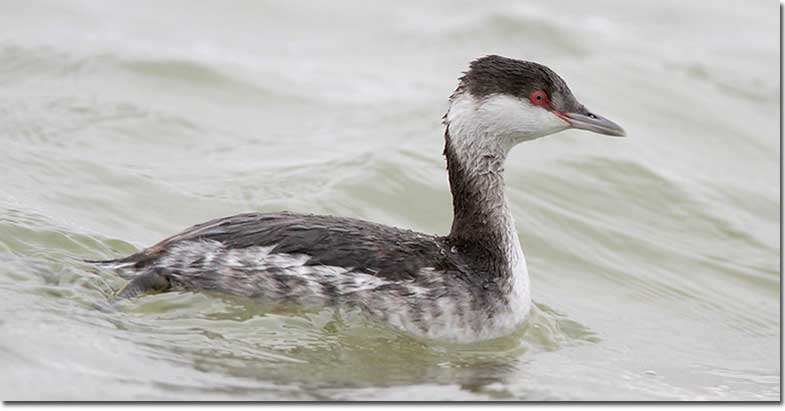
Winter birds have a black cap, white cheeks, mostly white foreneck and gray hindheck, and grayish upperparts with whitish flanks. Photograph by Glenn Bartley. Juveniles are similar to winter-plumaged birds.
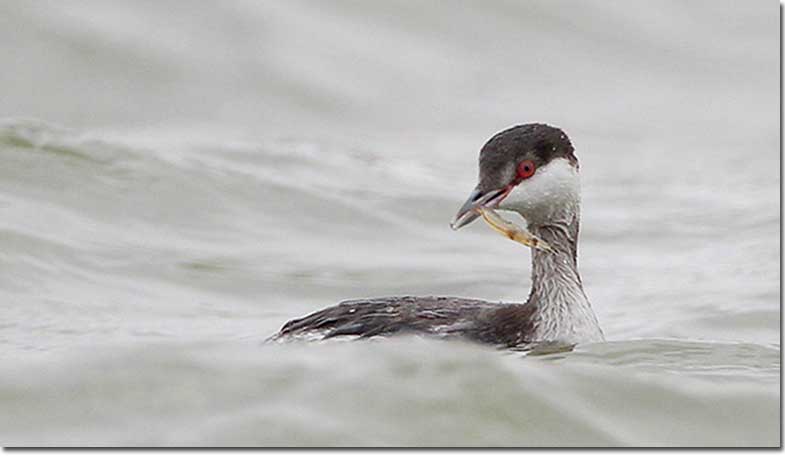
Note the pale area in front of the eye. Found on most Horned Grebes in winter plumage but can be difficult to see in the field. Usually absent from similar Eared Grebe. Photograph by Glenn Bartley.
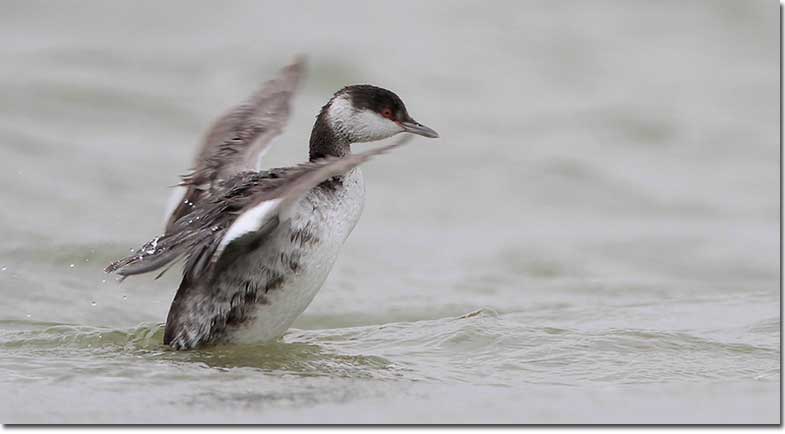
Grebes dive to escape danger and are seldom seen in flight. The white wing patches of the Horned Grebe are visible in this photo. Photograph by Greg Lavaty.
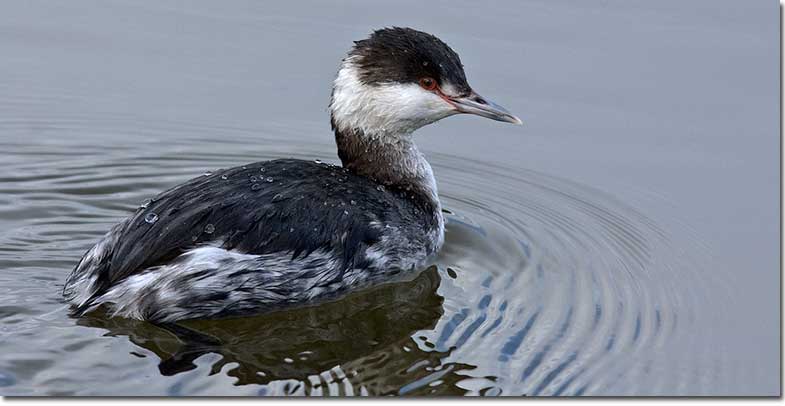
The white area on the face, just below and behind the eye, is sharply separated from the black cap. In Eared Grebes, the area has a more diffused, gray appearance. Photograph by Alan Wilson.
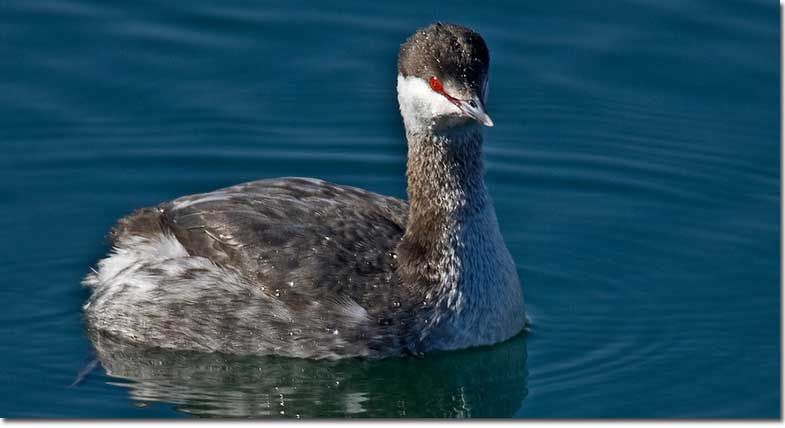
Photograph by Alan Wilson.
Habitat
Horned Grebes breed on lakes with emergent vegetation, and winter in coastal waters and larger inland lakes that remain ice-free in the winter.
Diet
Horned Grebes dive to capture aquatic prey, primarily insects, but also crustaceans and fish.
Behavior
Horned Grebes have legs set far back on their bodies, a position that is good for swimming but poor for walking on land. To take flight they must have a running start, paddling furiously through the water while flapping their wings. They are usually seen swimming on the surface, and frequently diving in search of prey.
Range
Horned Grebes breed across parts of Alaska, Canada, and the far northern portions of the central U.S. They winter primarily along both the Atlantic and Pacific Coasts, and occasionally on southern U.S. lakes. Horned Grebes may be declining, although their population is not well measured.
Fun Facts
A Horned Grebe courtship display involves a pair racing vertically across the water side by side with wings partly spread open and grasses or weeds held in their bills.
Because Horned Grebes require a running start in open water to take flight, they may become trapped if surface water freezes rapidly overnight.
Young Horned Grebes often ride on their swimming parents’ backs.
Vocalizations
The Horned Grebe’s song is a trill, often in duet. Calls include a descending whine ending with a rattle.
Similar Species
Eared Grebe
Have thinner, more pointed bills, a black (in summer) or grayish (in winter) neck, and grayish cheeks in winter.
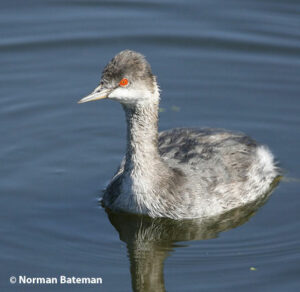
Eared grebe
Nesting
The nest is a floating pile of plant material placed in shallow water.
Number: Usually lay 4-6 eggs.
Color: Whitish or pale greenish and often stained by nest material.
Incubation and fledging:
The young hatch at about 22-25 days, and leave the nest shortly after hatching, though they continue to associate with the adults for some time, and are not capable of flight until age 8 weeks or more.
Horned vs Eared Grebe
The following image shows both Eared and Horned Grebe in winter plumage. Confusing, huh? The Horned Grebe is on the left, and the Eared Grebe is on the right.
The white tip of the bill of the Horned Grebe is not visible in this photograph. The amount of white the head and neck of the Eared Grebe is variable, and can approach that of the Horned Grebe. The bill of the Horned Grebe is heavier. Note the flat top appearance to the head of the Horned Grebe in this and the photographs above, compared to the peaked head of the Eared Grebe.



Diane
Monday 18th of December 2023
Thanks very helpful